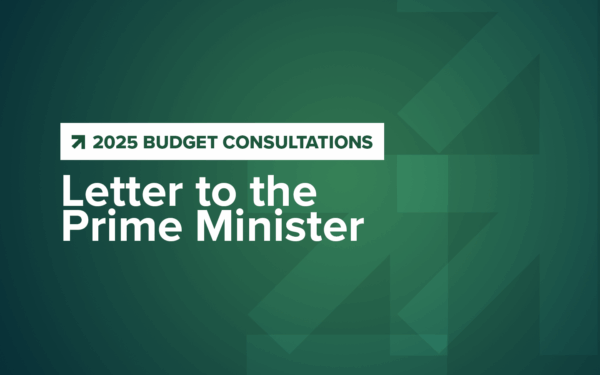A Biden presidency? Why Canada needs its own economic recovery plan to ‘build back better’
As published in the Globe and Mail
Robert Asselin is senior vice-president of policy at the Business Council of Canada and former policy adviser to two prime ministers
As Joe Biden is set to be formally nominated by his party at the Democratic National Convention on Aug. 20, Canadian policy makers would be wise to start thinking through the implications of a Biden presidency on Canada’s economic policy.
What will happen in November is still anybody’s guess. This is an unprecedented moment in history. Even if Mr. Biden wins, it’s uncertain whether he could count on enough allies in Congress to carry out his ambitious policy agenda.
Over the past few weeks, Mr. Biden’s platform roll-out has made one thing abundantly clear: His embrace of industrial policy as the main lever to rebuild the economy is a significant departure from the laissez-faire orthodoxy that has shaped U.S. policy since the Reagan presidency.
Faced with rising inequality, the acceleration of “decoupling” between China and the United States, climate change and a renewed emphasis on resilient supply chains to address the COVID-19 pandemic, Mr. Biden understands the unique circumstances of the moment. In response, and this cannot be emphasized enough, his “build back better” economic recovery plan would represent the largest mobilization of public investments in procurement, infrastructure, and research and development the United States has undertaken since the Second World War.
Mr. Biden’s policy objectives are consequential for Canada on at least two fronts.
First, on trade policy, Canadians must realize we now live in an era of managed trade. Although a Biden administration is unlikely to revisit the new USMCA, his massive US$400-billion “Buy American” procurement policy would present real challenges to Canadian exporters. Any expectation that a reformed World Trade Organization will bring the U.S. back to a rules-based multilateral trade regime is also wishful thinking.
Mr. Biden’s plan would also force Canada to raise its game on economic competitiveness and innovation policy. As currently written, it commits to spending US$300-billion on research and development – including electric vehicle technology, lightweight materials, 5G and artificial intelligence – to unleash high-quality job creation in high-value manufacturing and technology. With a focus on policies for skilled immigration, the U.S would undoubtedly become the primary recruiter of global talent.
Second, Mr. Biden’s climate change policy signals a more stringent framework for carbon-intensive products imported into the U.S. – a measure that will undoubtedly create challenges and drive up costs for Canadian exporters. The plan also includes US$2-trillion in spending over four years in clean energy, transportation and infrastructure, and sets the goal of 100 per cent of the country’s electricity generated by carbon-free sources by 2035.
It remains to be seen how fiscal and tax policies would evolve under a Biden presidency. This year’s federal budget shortfall is already forecast to exceed 17 per cent of GDP, the most since the country mobilized to fight the Second World War. As a comparison, the shortfall was 10 per cent of GDP at the height of the 2008-2009 global financial crisis.
It’s fair to say many were taken by surprise when Donald Trump won the presidency in 2016. As a result, Canadian policy makers spent a lot of time playing defence with their U.S. counterparts. Mr. Biden has clearly laid out his economic framework. There’s no such excuse for delay this time around.
In the context of major geopolitical changes and structural shifts in the Canadian economy, such as the growing importance of intangible assets, including data and intellectual property, now is the time to develop an offensive strategy.
Canada should match Mr. Biden’s industrial policy framework with one of its own. Such an approach would challenge the Canadian government to think coherently about its economic policies, and prioritize the sectors and technologies in which we have pre-existing advantages. The ultimate goal is to anchor public policy in a clear set of objectives related to competitiveness, productivity and, ultimately, rising living standards for all Canadians.
A long-term economic strategy would amount to building a set of policies around the parts of Canada’s economy in which we can gain global market share and produce economic value for the country. Think agri-food or energy, but also emerging sectors, such as advanced manufacturing and clean technology.
Some skeptics may instinctively criticize the concept of a modern industrial strategy as an argument for a bigger, more activist government. But this critique fails to recognize how extensively the state is already active in the economy, spending billions on programs and enacting policies that give preference to certain market outcomes over others.
The more practical question is: Should we have a fragmented industrial policy or a strategy that is more focused and intentional? If we have learned anything from the past six months, it is that we’re a stronger and more effective country when businesses and governments at all levels work together to achieve shared objectives. We would be wise to continue that co-ordinated work as we plan for the future.
Latest Opinion
The missing piece in Canada’s defence industrial strategy
October 6, 2025












